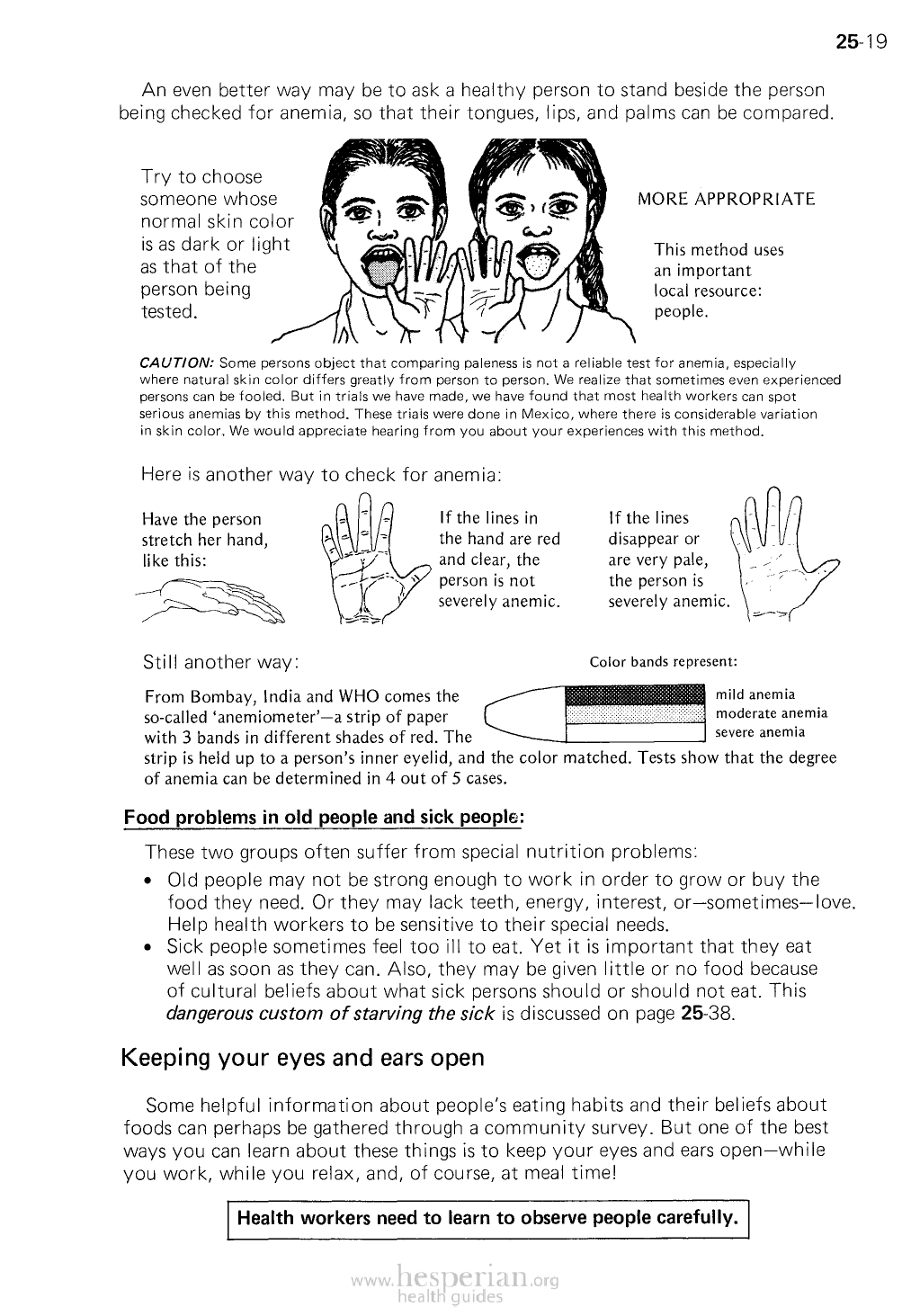
25-19
An even better way may be to ask a healthy person to stand beside the person
being checked for anemia, so that their tongues, lips, and palms can be compared.
Try to choose
someone whose
normal skin color
is as dark or light
as that of the
person being
tested.
MORE APPROPRIATE
This method uses
an important
local resource:
people.
CAUTION: Some persons object that comparing paleness is not a reliable test for anemia, especially where
natural skin color differs greatly from person to person. We realize that sometimes even experienced
persons can be fooled. But in trials we have made, we have found that most health workers can spot
serious anemias by this method. These trials were done in Mexico, where there is considerable variation in
skin color. We would appreciate hearing from you about your experiences with this method.
Here is another way to check for anemia:
Have the person
stretch her hand,
like this:
If the lines in
the hand are red
and clear, the
person is not
severely anemic.
If the lines
disappear or
are very pale,
the person is
severely anemic
Still another way:
Color bands represent:
From Bombay, India and WHO comes the
so-called ‘anemiometer’-a strip of paper with
3 bands in different shades of red. The strip
mild anemia
moderate anemia
severe anemia
is held up to a person’s inner eyelid, and the color matched. Tests show that the degree of
anemia can be determined in 4 out of 5 cases.
Food problems in old people and sick people:
These two groups often suffer from special nutrition problems:
• Old people may not be strong enough to work in order to grow or buy the
food they need. Or they may lack teeth, energy, interest, or—sometimes—
love. Help health workers to be sensitive to their special needs.
• Sick people sometimes feel too ill to eat. Yet it is important that they eat
well as soon as they can. Also, they may be given little or no food because
of cultural beliefs about what sick persons should or should not eat. This
dangerous custom of starving the sick is discussed on page 25-38.
Keeping your eyes and ears open
Some helpful information about people’s eating habits and their beliefs about
foods can perhaps be gathered through a community survey. But one of the best
ways you can learn about these things is to keep your eyes and ears open-while
you work, while you relax, and, of course, at meal time!
Health workers need to learn to observe people carefully.